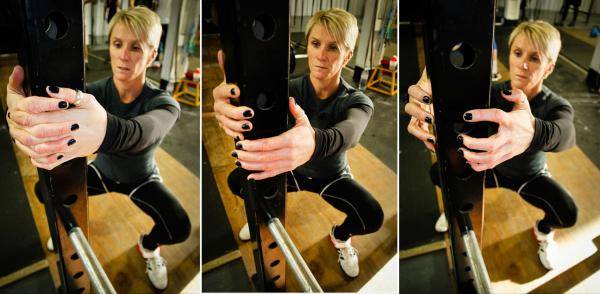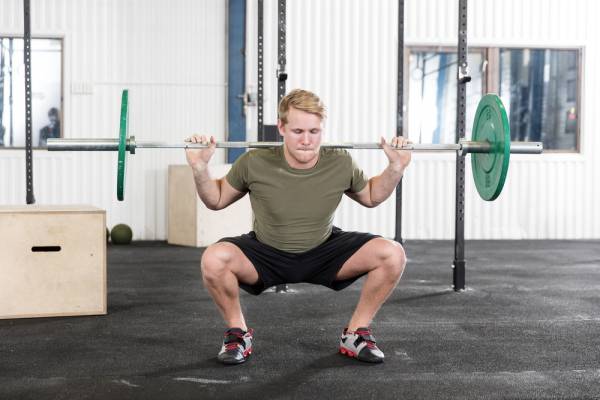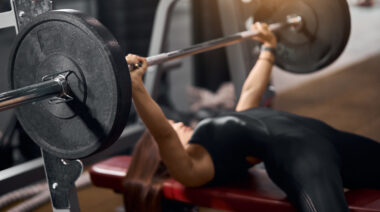A powerlifting buddy of mine once asked me what corrective exercises and mobility stuff I do on the regular. I shrugged. I have a confession to make: I don’t do a lot of mobility work.
I know, I know, many of you are probably thinking that’s absurd considering the fact I’m supposedly an expert on the topic. How could I possibly be so well versed in a subject I spend less than ten minutes on every time I train? Allow me to explain.
What Mobility Is Actually For
Mobility is all about positioning and alignment. At the risk of sounding like a broken record, postural alignment is the basis of proper movement. This isn’t as simple as saying that if your posture sucks, then your movement sucks – true though that may be.
What it means is that when your muscles don’t sit at neutral lengths, they pull your skeleton into weird positions. When your skeleton is in these weird positions a lot of muscles can’t fire correctly, which leads to use the wrong muscles to do things. This will short-circuit your progress and could very likely lead to serious injury.
Mobility work, ideally, is focused on restoring lost ranges of motion and returning your muscles to their neutral lengths so you can reteach them how they should work. What that means is that mobility is incredibly important for beginners, particularly beginners of an advanced age.
![]() Click To Tweet: How to make your mobility work better
Click To Tweet: How to make your mobility work better
It Took Me Three Months to Squat
The older you are, the longer your body has had to develop poor neurological habits. Therefore, it’s going to take a bit longer to break those habits. Don’t worry, though. Barring some rare genetic deformity or a history of repeated, car crash-level bodily traumas, most mobility issues can be resolved in a few months. Seriously.
Like many of you, when I first started training I had a lot of trouble hitting full-depth in my squat and getting my hands overhead in a good position. I spent a lot of time during my warm ups sitting in the bottom of a squat and trying to open up my hips. I would also spend a lot of time doing pass-throughs (or dislocates, depending on your preferred verbiage) with a PVC pipe to open up my shoulders. I did a lot of hip flexor stretching, laying on the ground with my feet on a wall to stretch my adductors and a whole bunch of other things.

If you guys are interested, I’ll write up an easy mobility cheat sheet outlining the stuff I did, but that’s a bit outside the scope of this particular article. But the point is, it took me roughly two to three months to reach a point where I could simply drop into the bottom of a squat while keeping my knees out, chest up, and back flat.
Active Mobility vs. Passive Mobility
In physical therapy, we use the terms active range of motion (AROM) and passive range of motion (PROM) to define the difference between being able to obtain a position through some outside influence (either having the therapist manually move you there or through the use of a stretching or mobility apparatus), which would be passive, and being able to get there yourself using the proper muscles to achieve that motion, which would be active. Once you regain the ability to actively perform a movement, passive range of motion exercises are no longer utilized because at that point they really don’t do much for you.
So, how does this affect the everyday workout aficionado? The difference between AROM and PROM is similar to the difference between what I call active mobility and passive mobility. Passive mobility is being able to get your body into a position regardless of how you do it. Maybe you use band distractions or you hold onto a rack. Maybe you simply have a buddy help move you into the right position.
Whatever tool(s) you use, passive mobility means getting into a position through the use of assistance that allows you to achieve ranges of motions you are not capable of on your own. The real goal is to achieve this, and then turn it into active mobility.
Mobilizing Means You Need to Lift Lighter
This is the part that frustrates a lot of people. In most cases, if you were strong but immobile, mobilizing yourself will initially make you feel weaker. It’s not that you’ve lost any strength through the ranges you were used to, it’s that now you have additional ranges of motion in your joints that you’ve never trained.
The smartest way to deal with this situation is also the most simple: knock your weights down and work back up. It won’t take nearly as long for those lagging portions of each movement to catch up as it took to build the strength initially.

A big mistake I see is people who’ve just been bitten by the mobility bug spend half an hour mobilizing the crap out of something, be it their ankles, hips, or vertebrae. Then, immediately afterwards, they go out and try to use this newfound range of motion to lift the same weights they were lifting before. It’s not that this approach is a one-way ticket to snap city (though it can be), it’s that this will frequently defeat the purpose of all that mobility work you just did.
Proper mechanics will reinforce proper movement patterns that utilize full ranges of motion and optimal positions. If you mobilize yourself to achieve these positions, but then immediately try to use a load your body can only handle through half of your newfound range, guess what? Your body is going to default to your old, crappy mechanics. Why? Because you haven’t allowed it to learn anything else.
Mobility Work: You’re Doing It Wrong
I frequent a number of gyms in my area – some due to preference, others due to time constraints. The other day when I was training at my preferred home base, I heard a few of the trainers talking about mobility and working out. I heard one of them say how she had started focusing on doing thirty to forty minutes of mobility work in order to do a twenty or thirty minute workout.
I recognize that mobility is all the rage at the moment and while I disagree that it’s simply a fad, it does suffer from some of the downsides of being popular. Mobility is incredibly important but it’s also a very early step on the path to optimal performance. Twenty minutes of mobility work when you’re first starting out might be necessary, but unless you’ve got some crazy problems, you shouldn’t be spending more time mobilizing than training. If you genuinely feel like the way you workout forces you to mobilize that much, then you’re probably working out wrong.
Invest time early on to mobilize and achieve proper mechanics. Once you do this, the best way to maintain your mechanics is to use them. If you’re not a beginner and you still need twenty minutes of mobility just to get into a squat, it’s time to take a good hard look at the way you train. You might not like what you see.






